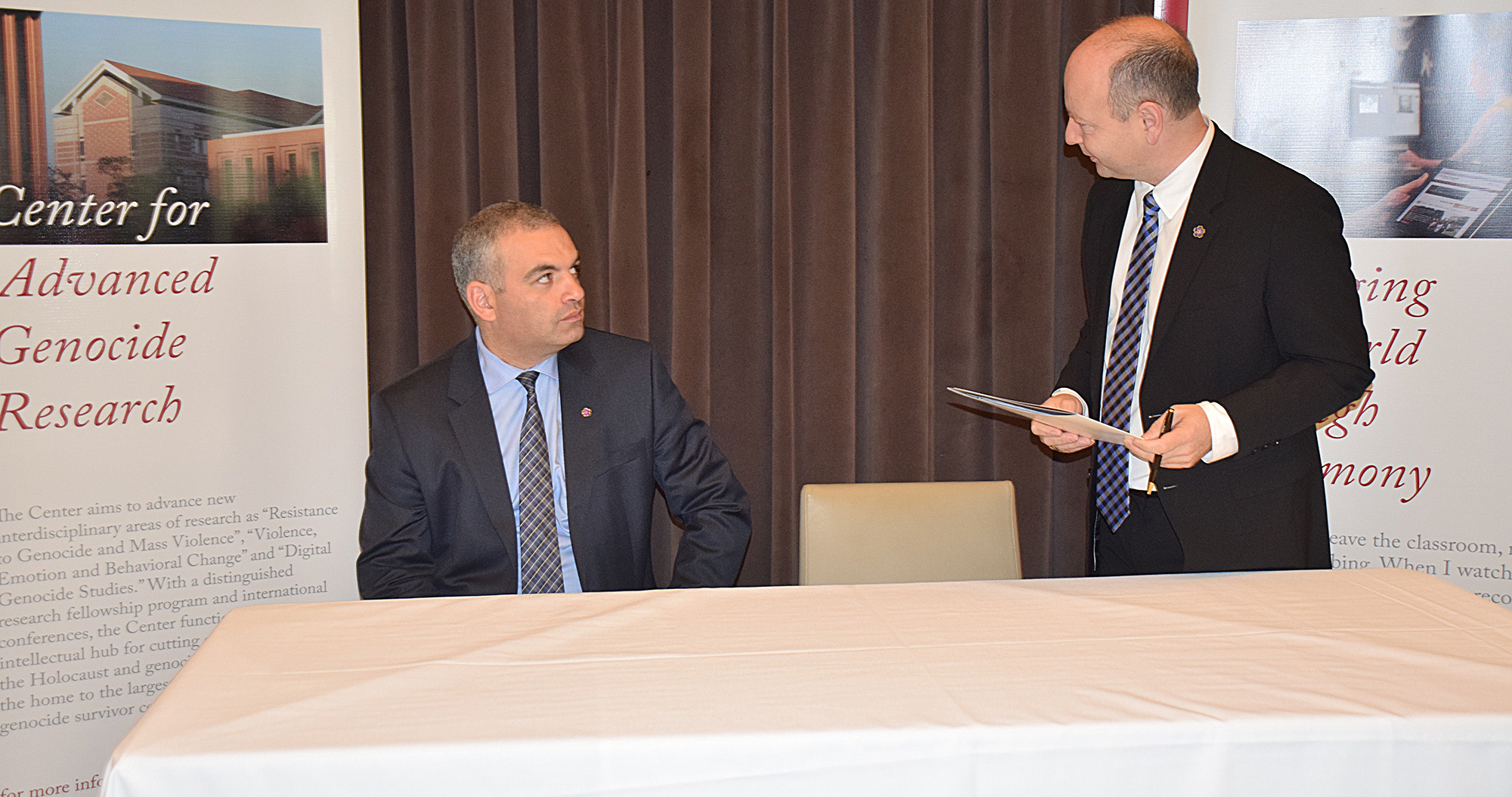USC Shoah Foundation Signs Memorandum of Understanding with Armenian Genocide Museum & Institute


(L-R: Michael Amerian, Wolf Gruner, Hayk Demoyan, Carla Garapedian, Stephen Smith, Gerald Papazian, Richard Hovannisian)
Stephen Smith and Hayk Demoyan, directors of USC Shoah Foundation and the Armenian Genocide Museum & Institute, respectively, came together today to sign a memorandum of understanding that paves the way for future collaboration between the two organizations.
The Armenian Genocide Museum & Institute (AGMI) is located in Yerevan, Armenia, and is dedicated to academic and scientific study, analysis of the problems as well as exhibition of the textual and visual documentation related to the Armenian Genocide. Its exhibitions present maps, eyewitness accounts, artifacts and other documentation of the genocide, in which 1.5 million Armenians were killed from 1915-1923.
The first 60 interviews from USC Shoah Foundation’s new Armenian Genocide Collection will be indexed and available to view in the Visual History Archive on April 24, 2015, the 100th anniversary of the genocide. These interviews are part of the Armenian Film Foundation’s collection of 400 interviews of Armenian Genocide survivors and witnesses recorded by filmmaker J. Michael Hagopian beginning in the 1970s.
The memorandum of understanding between USC Shoah Foundation and AGMI is an agreement to make AGMI a full access site of the Visual History Archive, so visitors and scholars in Yerevan can view all 52,000 testimonies, including the Holocaust, Rwandan Genocide and Armenian Genocide collections, on-site at the museum. AGMI will also collaborate on research and educational projects with USC Shoah Foundation and explore the possibility of expanding the Armenian Genocide Collection with new or existing testimony.
Smith and Demoyan signed the memorandum of understanding at a reception Friday morning at USC’s University Club. Smith said working with AGMI is vital to USC Shoah Foundation’s mission, because the museum will provide the appropriate context for the Visual History Archive to live in Yerevan.
“We are deeply dedicated to ensuring that those testimonies collected by J. Michael Hagopian over those many decades find their voice in the world. There is no better or more appropriate place to do that than in Yerevan itself,” Smith said. “It’s a place of memory, a place where history emanates from, and, through your leadership, ensures that research and education, which are the fundamentals of our institute too, really ground these testimonies in the world.”
Demoyan said the occasion was very special to him and the museum. In the midst of a very busy month, opening new exhibitions and traveling around the world to commemorate the Armenian Genocide Centennial, it is important to celebrate the signing of the memorandum and begin a fruitful partnership with USC Shoah Foundation.
“This will not stay on the paper,” Demoyan said. “Our signatures are triggering something important, triggering the process of research, preservation, study and cooperation.”
Demoyan is himself a researcher and has written 12 books and 40 scholarly articles on the Armenian Genocide, Turkish foreign policy and the Nagorno-Karabakh conflict of 1991-1994. He is also the Executive Secretary of the State Commission coordinating the worldwide commemoration of the Armenian Genocide Centennial.
To learn more about the Armenian Genocide Centennial, visit http://armeniangenocide100.org/en/
Like this article? Get our e-newsletter.
Be the first to learn about new articles and personal stories like the one you've just read.